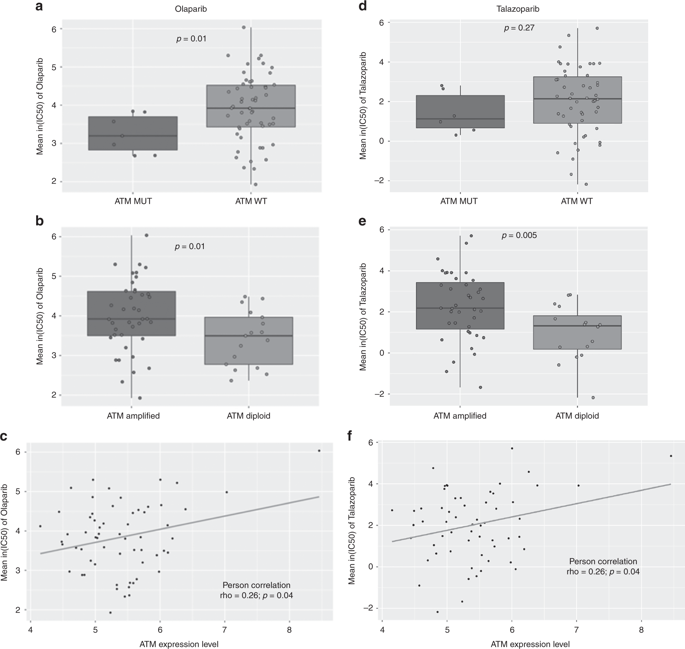当前位置:
X-MOL 学术
›
Br. J. Cancer
›
论文详情
Our official English website, www.x-mol.net, welcomes your
feedback! (Note: you will need to create a separate account there.)
Combined poly-ADP ribose polymerase and ataxia-telangiectasia mutated/Rad3-related inhibition targets ataxia-telangiectasia mutated-deficient lung cancer cells.
British Journal of Cancer ( IF 6.4 ) Pub Date : 2019-09-04 , DOI: 10.1038/s41416-019-0565-8 Nicholas R Jette 1 , Suraj Radhamani 1 , Greydon Arthur 1 , Ruiqiong Ye 1 , Siddhartha Goutam 1 , Anthony Bolyos 1 , Lars F Petersen 2 , Pinaki Bose 1, 2 , D Gwyn Bebb 2 , Susan P Lees-Miller 1, 2
British Journal of Cancer ( IF 6.4 ) Pub Date : 2019-09-04 , DOI: 10.1038/s41416-019-0565-8 Nicholas R Jette 1 , Suraj Radhamani 1 , Greydon Arthur 1 , Ruiqiong Ye 1 , Siddhartha Goutam 1 , Anthony Bolyos 1 , Lars F Petersen 2 , Pinaki Bose 1, 2 , D Gwyn Bebb 2 , Susan P Lees-Miller 1, 2
Affiliation

|
BACKGROUND
Up to 40% of lung adenocarcinoma have been reported to lack ataxia-telangiectasia mutated (ATM) protein expression. We asked whether ATM-deficient lung cancer cell lines are sensitive to poly-ADP ribose polymerase (PARP) inhibitors and determined the mechanism of action of olaparib in ATM-deficient A549 cells.
METHODS
We analysed drug sensitivity data for olaparib and talazoparib in lung adenocarcinoma cell lines from the Genomics of Drug Sensitivity in Cancer (GDSC) project. We deleted ATM from A549 lung adenocarcinoma cells using CRISPR/Cas9 and determined the effects of olaparib and the ATM/Rad3-related (ATR) inhibitor VE-821 on cell viability.
RESULTS
IC50 values for both olaparib and talazoparib positively correlated with ATM mRNA levels and gene amplification status in lung adenocarcinoma cell lines. ATM mutation was associated with a significant decrease in the IC50 for olaparib while a similar trend was observed for talazoparib. A549 cells with deletion of ATM were sensitive to ionising radiation and olaparib. Olaparib induced phosphorylation of DNA damage markers and reversible G2 arrest in ATM-deficient cells, while the combination of olaparib and VE-821 induced cell death.
CONCLUSIONS
Patients with tumours characterised by ATM-deficiency may benefit from treatment with a PARP inhibitor in combination with an ATR inhibitor.
中文翻译:

结合的聚ADP核糖聚合酶和共济失调毛细血管扩张突变/ Rad3相关的抑制目标共济失调毛细血管扩张突变的肺癌细胞。
背景技术据报道,多达40%的肺腺癌缺乏共济失调-毛细血管扩张突变(ATM)蛋白表达。我们询问ATM缺陷型肺癌细胞株是否对聚ADP核糖聚合酶(PARP)抑制剂敏感,并确定了奥拉帕尼在ATM缺陷型A549细胞中的作用机理。方法我们从癌症药物敏感性基因组学(GDSC)项目中分析了olaparib和talazoparib在肺腺癌细胞系中的药物敏感性数据。我们使用CRISPR / Cas9从A549肺腺癌细胞中删除了ATM,并确定了olaparib和ATM / Rad3相关(ATR)抑制剂VE-821对细胞生存力的影响。结果olaparib和talazoparib的IC50值与肺腺癌细胞系中ATM mRNA水平和基因扩增状态呈正相关。ATM突变与olaparib的IC50显着降低有关,而talazoparib的观察到类似趋势。缺失ATM的A549细胞对电离辐射和olaparib敏感。奥拉帕里布在ATM缺陷型细胞中诱导DNA损伤标志物的磷酸化和可逆的G2阻滞,而奥拉帕尼和VE-821的组合则诱导细胞死亡。结论具有ATM缺乏症特征的肿瘤患者可从PARP抑制剂与ATR抑制剂联合治疗中受益。而olaparib和VE-821的组合可诱导细胞死亡。结论具有ATM缺乏症特征的肿瘤患者可从PARP抑制剂与ATR抑制剂联合治疗中受益。而olaparib和VE-821的组合可诱导细胞死亡。结论具有ATM缺乏症特征的肿瘤患者可从PARP抑制剂与ATR抑制剂联合治疗中受益。
更新日期:2019-09-04
中文翻译:

结合的聚ADP核糖聚合酶和共济失调毛细血管扩张突变/ Rad3相关的抑制目标共济失调毛细血管扩张突变的肺癌细胞。
背景技术据报道,多达40%的肺腺癌缺乏共济失调-毛细血管扩张突变(ATM)蛋白表达。我们询问ATM缺陷型肺癌细胞株是否对聚ADP核糖聚合酶(PARP)抑制剂敏感,并确定了奥拉帕尼在ATM缺陷型A549细胞中的作用机理。方法我们从癌症药物敏感性基因组学(GDSC)项目中分析了olaparib和talazoparib在肺腺癌细胞系中的药物敏感性数据。我们使用CRISPR / Cas9从A549肺腺癌细胞中删除了ATM,并确定了olaparib和ATM / Rad3相关(ATR)抑制剂VE-821对细胞生存力的影响。结果olaparib和talazoparib的IC50值与肺腺癌细胞系中ATM mRNA水平和基因扩增状态呈正相关。ATM突变与olaparib的IC50显着降低有关,而talazoparib的观察到类似趋势。缺失ATM的A549细胞对电离辐射和olaparib敏感。奥拉帕里布在ATM缺陷型细胞中诱导DNA损伤标志物的磷酸化和可逆的G2阻滞,而奥拉帕尼和VE-821的组合则诱导细胞死亡。结论具有ATM缺乏症特征的肿瘤患者可从PARP抑制剂与ATR抑制剂联合治疗中受益。而olaparib和VE-821的组合可诱导细胞死亡。结论具有ATM缺乏症特征的肿瘤患者可从PARP抑制剂与ATR抑制剂联合治疗中受益。而olaparib和VE-821的组合可诱导细胞死亡。结论具有ATM缺乏症特征的肿瘤患者可从PARP抑制剂与ATR抑制剂联合治疗中受益。


















































 京公网安备 11010802027423号
京公网安备 11010802027423号